COMMUNICATION
Why are some insects so shiny and iridescent?
First here’s a post I answered on HOW insects form shiny or iridescent exoskeletons. It’s always good to know the answer to how because it can give context to the why. So why are some insects iridescent or shiny?
This can be split into two main categories; communicative functions and non-communicative.
COMMUNICATION
1. Mate Selection
While insects tend to use chemical communication more as a means of attracting potential mates colouration can however play a significant role in mate selection in a number of ways.
Honest signalling - in which the colouration reveals the quality of the individual as these colourations are costly to produce. Therefore only individuals that are high-quality are able to afford the cost of producing these signals (in this case the iridescence or shiny colouration)
Example:
A study (Fitzstephens & Getty, 2000) found that male Calopteryx maculata (Black-winged damselfly) with higher fat stores had a much bluer iridescent colouration compared to males on low fat diets.

Amplifier traits - iridescent / shiny colours may be used to amplify the differences in the signals of quality (however no studies have directly focused if this is a function of iridescence)
Sensory drives - iridescent colouration was favoured due to being more effective in signalling in certain ecological environments
Receiver Bias - females (or in rare cases the males or hermaphrodites) as the receivers may have favoured certain iridescent colouration due to being better received by their sensory system therefore resulting in the evolution of this colouration
2. Species Recognition
Man species use iridescent / shiny colouration in order to identify members of their own species! As simple as that!
Example:
Colias eurytheme (orange sulfur butterfly) use UV iridescence to communication with conspecifics

3.Agonistic interactions
Iridescense / shiny colouration may be used in intrasexual encounters; mostly male-male agonistic encounters and can be used as a territorial signal.
4.flocking behaviour
Can help insects that school together facilitate their orientation or direction within their schools / flocks. This is seen in many aquatic species of fish and even squid.
5. Predation avoidance
Iridescense / shiny colouration can be used to order to actually avoid predation! Although at first glance you’d assume this would make them more visible, this isn’t always the case.
Mimicry / camouflage - insects can avoid predation by mimicking objects, leaves, raindrops, other harmful species or even by blending into the background
Examples:
A number of iridescent jumping spider species (Salticidae); such as Brettus adonis in this study (Jackson & Hallas 1986) were found to mimic raindrops to avoid predation

The iridescent green leaf beetles such as the (Dogbane Leaf Beetle, Chrysochus auratus) similarity use their iridescence colouration to mimic dew on leaves.

Species like tiger beetles ( Cicindelinae) even use their iridescence to create an unsaturated appearance that allow them to blend into their envrionment (Schultz 1986, 2001)

Warning colouration - insects may use their colouration to communicate their toxicity or unpalatability serving as aposematic warning.
Example:
Panamanian tortoise beetle (Charidotella egregia) that change from gold to red when disturbed by predators(Vigneron et al. 2007).

Startle displays - some species will use their iridescence colouration to create a flash that may startle potential predators long enough for them to escape due to the way in which the iridescence reflects light.
Example:
The tiger beeltes again! Some of them have bright colouration like below that they use as startle defenses against predators (Sargent 1990).

NON-COMMUNICATION
1. Thermoregulation
There’s much debate over whether Iridescense / shiny colouration has any function in either heat absorption or dispersion.
Some found evidence that the structures used to created iridescense / shiny colouration acted as heat collectors, like in the wings of butterflies ( Miaoulis & Heilman 1998). However other’s have found no evidence of thermoregulation in tiger beetles Schultz & Hadley (1987).
2.Friction reduction
iridescense structures may reduce the friction in burrowing insects
Example: Carabid Beetles (Brachininae) (Seago et al. 2009).

These are just some of the proposed and studied functions of iridescense and shiny colouration in insects, there are more that aren’t as well studied or understood just yet!
More reading:
Doucet S, Meadows M 2009, ‘Iridescence: a functional perspective’, Journal of the Royal Society Interface, vol.6, no.2, pp.115–132
Meadows M, Butler M, Morehouse N, Taylor L, Toomey M, McGraw K, Rutowski R 2009, ‘Iridescence: views from many angles’, Journal of the Royal Society Interface, vol.6, pp.203–211
More Posts from Ritasakano and Others
Ponto Cor Delicadezas.

crudistore via Instagram
Que trabalho maravilhoso!!


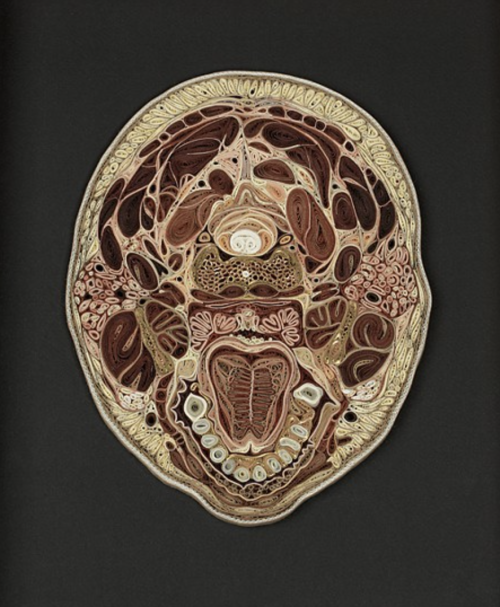

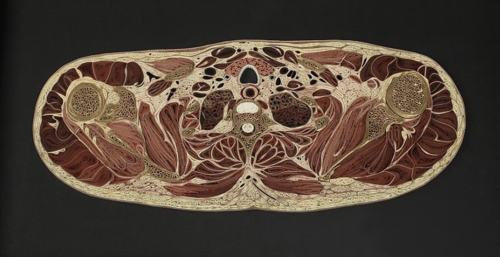
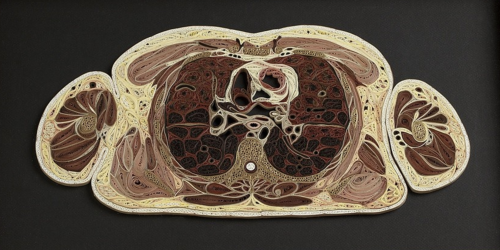
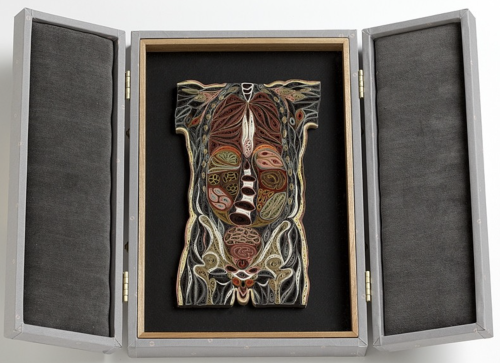

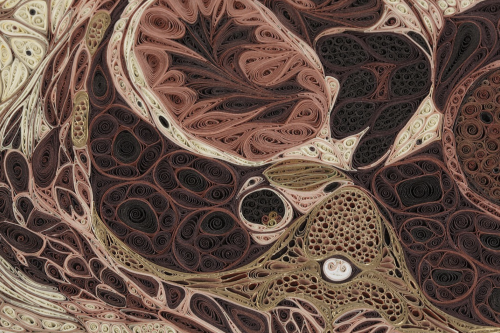

Tissue Series
These pieces are made of Japanese mulberry paper and the gilded edges of old books. They are constructed by a technique of rolling and shaping narrow strips of paper called quilling or paper filigree. Quilling was first practiced by Renaissance nuns and monks who are said to have made artistic use of the gilded edges of worn out bibles, and later by 18th century ladies who made artistic use of lots of free time.
- by Lisa Nilsson
Muito bom!!

Resist the road-rage on the protein super highway.
Be sure to check out all our science GIFs here for your studyblrs, teacher websites, presentations, or mind-numbing entertainment! Just please keep our name on there and don’t sell them! :D










“Throwback 2019”
Visit Instagram Profile > Hisa instagram

yuri mizutani Original_2015

Chopin, Bach used human speech ‘cues’ to express emotion in music
Music has long been described, anecdotally, as a universal language.
This may not be entirely true, but we’re one step closer to understanding why humans are so deeply affected by certain melodies and modes.
A team of McMaster researchers has discovered that renowned European composers Frédéric Chopin and Johann Sebastian Bach used everyday speech “cues” to convey emotion in some of their most famous compositions. Their findings were recently published in Frontiers of Psychology: Cognition.
Their research stemmed from an interest in human speech perception — the notion that “happy speech” for humans tends to be higher in pitch and faster in timing, while “sad speech” is lower and slower.
These same patterns are reflected in the delicate nuances of Chopin and Bach’s music, the McMaster team found.
To borrow from Canadian singer-songwriter Feist, we “feel it all” because the music features a very familiar cadence or rhythmic flow. It’s speaking to us in a language we understand.
“If you ask people why they listen to music, more often than not, they’ll talk about a strong emotional connection,” says Michael Schutz, director of McMaster’s MAPLE (Music, Acoustics, Perception & LEarning) Lab, and an associate professor of music cognition and percussion.
“What we found was, I believe, new evidence that individual composers tend to use cues in their music paralleling the use of these cues in emotional speech.” For example, major key or “happy” pieces are higher and faster than minor key or “sad” pieces.
The team also discovered that Bach and Chopin appear to “trade-off” their use of cues within the examined music.
Sets with larger pitch differences between major and minor key pieces had smaller timing differences, and vice versa. This may reflect efforts to balance the cues to avoid sounding trite, Schutz explains.
Schutz and Matthew Poon, a Music alumnus from the Class of 2012, began analyzing a complete body or “corpus” of three 24-piece sets by Chopin and Bach several years ago, as part of an Undergraduate Student Research Award (USRA) project. Poon is now a graduate student at the University of Toronto.
The pair analyzed all 48 preludes and fugues from J.S. Bach’s Well-Tempered Clavier (Book 1); as well as all 24 of Chopin’s Preludes (Op. 28). The pieces were chosen based on their historical significance and enduring popularity amongst performers, educators and audiences.
In order to ensure the tonal areas of each composition stayed in their stated keys, analysis was confined to the first eight complete measures — excluding pick-ups — from each of the 72 pieces.
Previous research on musical emotion has often involved manipulating existing melodies and compositions, Schutz explains. For example, transposing a melody higher or playing a song slower than written, in order to explore changes in emotional responses.
The McMaster-led study built upon that work by exploring how Bach and Chopin used emotional cues in their actual work — music still performed and enjoyed on a regular basis, hundreds of years after it was composed.
Can the same research be applied to modern pop music? Schutz says yes, although it’s much easier to analyze classical music based on the availability of sheet music and detailed notation, he offers.
Fantástico!!

What’s that green streak in front of the Andromeda galaxy? A meteor. While photographing the Andromeda galaxy last Friday, near the peak of the Perseid Meteor Shower, a sand-sized rock from deep space crossed right in front of our Milky Way Galaxy’s far-distant companion. The small meteor took only a fraction of a second to pass through this 10-degree field. The meteor flared several times while braking violently upon entering Earth’s atmosphere. The green color was created, at least in part, by the meteor’s gas glowing as it vaporized. Although the exposure was timed to catch a Perseids meteor, the orientation of the imaged streak seems a better match to a meteor from the Southern Delta Aquariids, a meteor shower that peaked a few weeks earlier
Object Names: Andromeda Galaxy
Image Type: Astronomical
Credit: Fritz Helmut Hemmerich
Time And Space
A Wider Set of Eyes on the Universe
After years of preparatory studies, we are formally starting an astrophysics mission designed to help unlock the secrets of the universe.
Introducing…
the Wide Field Infrared Survey Telescope, aka WFIRST.

With a view 100 times bigger than that of our Hubble Space Telescope, WFIRST will help unravel the secrets of dark energy and dark matter, and explore the evolution of the cosmos. It will also help us discover new worlds and advance the search for planets suitable for life.
WFIRST is slated to launch in the mid-2020s. The observatory will begin operations after traveling about one million miles from Earth, in a direction directly opposite the sun.

Telescopes usually come in two different “flavors” - you have really big, powerful telescopes, but those telescopes only see a tiny part of the sky. Or, telescopes are smaller and so they lack that power, but they can see big parts of the sky. WFIRST is the best of worlds.
No matter how good a telescope you build, it’s always going to have some residual errors. WFIRST will be the first time that we’re going to fly an instrument that contains special mirrors that will allow us to correct for errors in the telescope. This has never been done in space before!
Employing multiple techniques, astronomers will also use WFIRST to track how dark energy and dark matter have affected the evolution of our universe. Dark energy is a mysterious, negative pressure that has been speeding up the expansion of the universe. Dark matter is invisible material that makes up most of the matter in our universe.
Single WFIRST images will contain over a million galaxies! We can’t categorize and catalogue those galaxies on our own, which is where citizen science comes in. This allows interested people in the general public to solve scientific problems.
Make sure to follow us on Tumblr for your regular dose of space: http://nasa.tumblr.com

Meu canto
-
 pangolin725 liked this · 1 year ago
pangolin725 liked this · 1 year ago -
 greenonthefruittree liked this · 1 year ago
greenonthefruittree liked this · 1 year ago -
 ratswatch reblogged this · 1 year ago
ratswatch reblogged this · 1 year ago -
 ratswatch liked this · 1 year ago
ratswatch liked this · 1 year ago -
 compostboy reblogged this · 1 year ago
compostboy reblogged this · 1 year ago -
 wachinyeya reblogged this · 1 year ago
wachinyeya reblogged this · 1 year ago -
 gaylienz liked this · 2 years ago
gaylienz liked this · 2 years ago -
 thefruitisforeveryone reblogged this · 2 years ago
thefruitisforeveryone reblogged this · 2 years ago -
 undertalebonesans reblogged this · 2 years ago
undertalebonesans reblogged this · 2 years ago -
 undertalebonesans liked this · 2 years ago
undertalebonesans liked this · 2 years ago -
 theotterblog reblogged this · 2 years ago
theotterblog reblogged this · 2 years ago -
 princessnefertankh liked this · 3 years ago
princessnefertankh liked this · 3 years ago -
 justasmidgx liked this · 3 years ago
justasmidgx liked this · 3 years ago -
 texas-toadhouse reblogged this · 4 years ago
texas-toadhouse reblogged this · 4 years ago -
 beetle-bear liked this · 4 years ago
beetle-bear liked this · 4 years ago -
 thonkifyouregrateful reblogged this · 4 years ago
thonkifyouregrateful reblogged this · 4 years ago -
 brittbrittbrittbritt reblogged this · 4 years ago
brittbrittbrittbritt reblogged this · 4 years ago -
 walpurgisnacht liked this · 4 years ago
walpurgisnacht liked this · 4 years ago -
 spookyskeleto liked this · 4 years ago
spookyskeleto liked this · 4 years ago -
 reb2009 reblogged this · 4 years ago
reb2009 reblogged this · 4 years ago -
 beausbugbiome liked this · 4 years ago
beausbugbiome liked this · 4 years ago -
 alrtist reblogged this · 4 years ago
alrtist reblogged this · 4 years ago -
 alrtist liked this · 4 years ago
alrtist liked this · 4 years ago -
 justhowmanywaffles reblogged this · 4 years ago
justhowmanywaffles reblogged this · 4 years ago -
 getouism liked this · 4 years ago
getouism liked this · 4 years ago -
 6-stitch liked this · 4 years ago
6-stitch liked this · 4 years ago -
 wiindclan liked this · 4 years ago
wiindclan liked this · 4 years ago -
 the-ivory-rabbit liked this · 5 years ago
the-ivory-rabbit liked this · 5 years ago -
 lacerationgrav1ty liked this · 5 years ago
lacerationgrav1ty liked this · 5 years ago -
 fuckitupromeo liked this · 5 years ago
fuckitupromeo liked this · 5 years ago -
 wantingmore liked this · 5 years ago
wantingmore liked this · 5 years ago -
 kageyahma-remade reblogged this · 5 years ago
kageyahma-remade reblogged this · 5 years ago -
 vionutlas liked this · 5 years ago
vionutlas liked this · 5 years ago -
 copannan liked this · 5 years ago
copannan liked this · 5 years ago -
 nastytrashgremlin liked this · 5 years ago
nastytrashgremlin liked this · 5 years ago -
 annoyinglyeclecticruins reblogged this · 5 years ago
annoyinglyeclecticruins reblogged this · 5 years ago -
 annoyinglyeclecticruins liked this · 5 years ago
annoyinglyeclecticruins liked this · 5 years ago -
 twerkteammajor liked this · 5 years ago
twerkteammajor liked this · 5 years ago -
 grownwomenworld liked this · 5 years ago
grownwomenworld liked this · 5 years ago